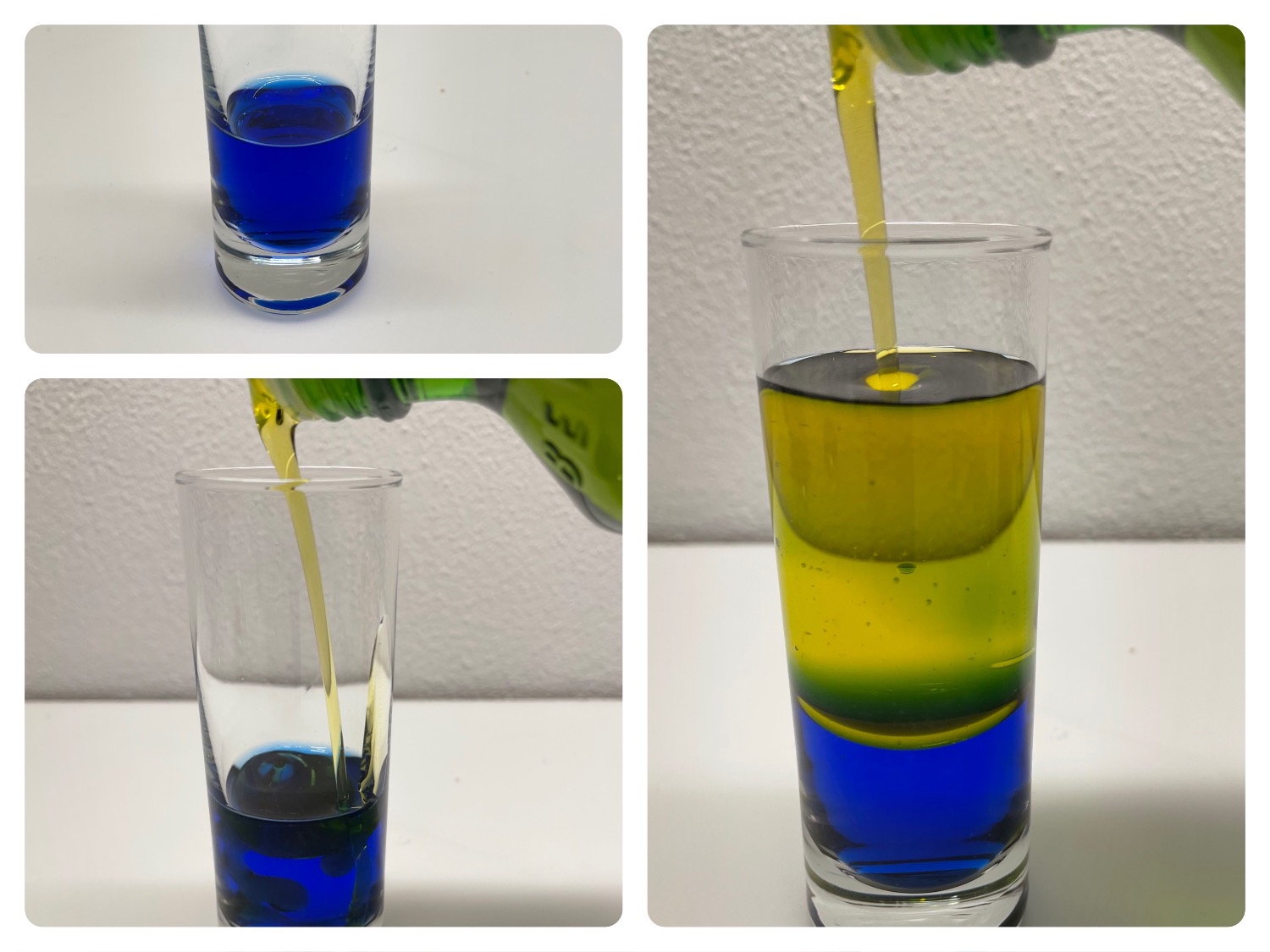
When oil is nearby, water would like to stay 'under itself'. Therefore, water does not mix with oil. The oil floats on the water because water is 'tighter' than oil. A vivid attempt makes this very clear. Adds water with crepe paper or food colour and fills salad oil with it. Try out what happens then! Children are amazed, especially when they have mixed an orange juice bowl or similar before it, and learn basics.

You need a slim high glass for this attempt. I used a shot glass!
First fill a glass with some water.
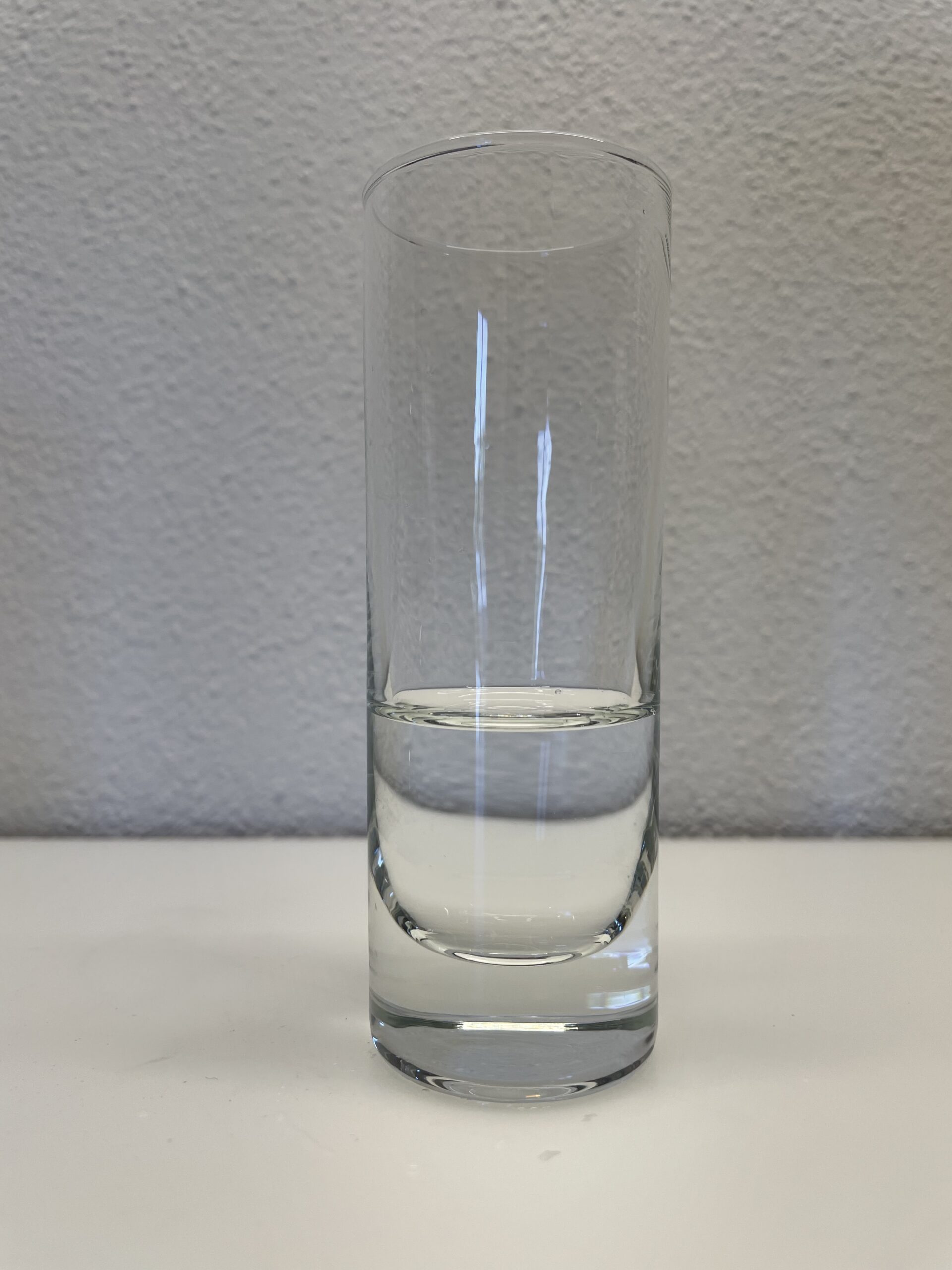
Then put a few snippets of crepe paper in the water.
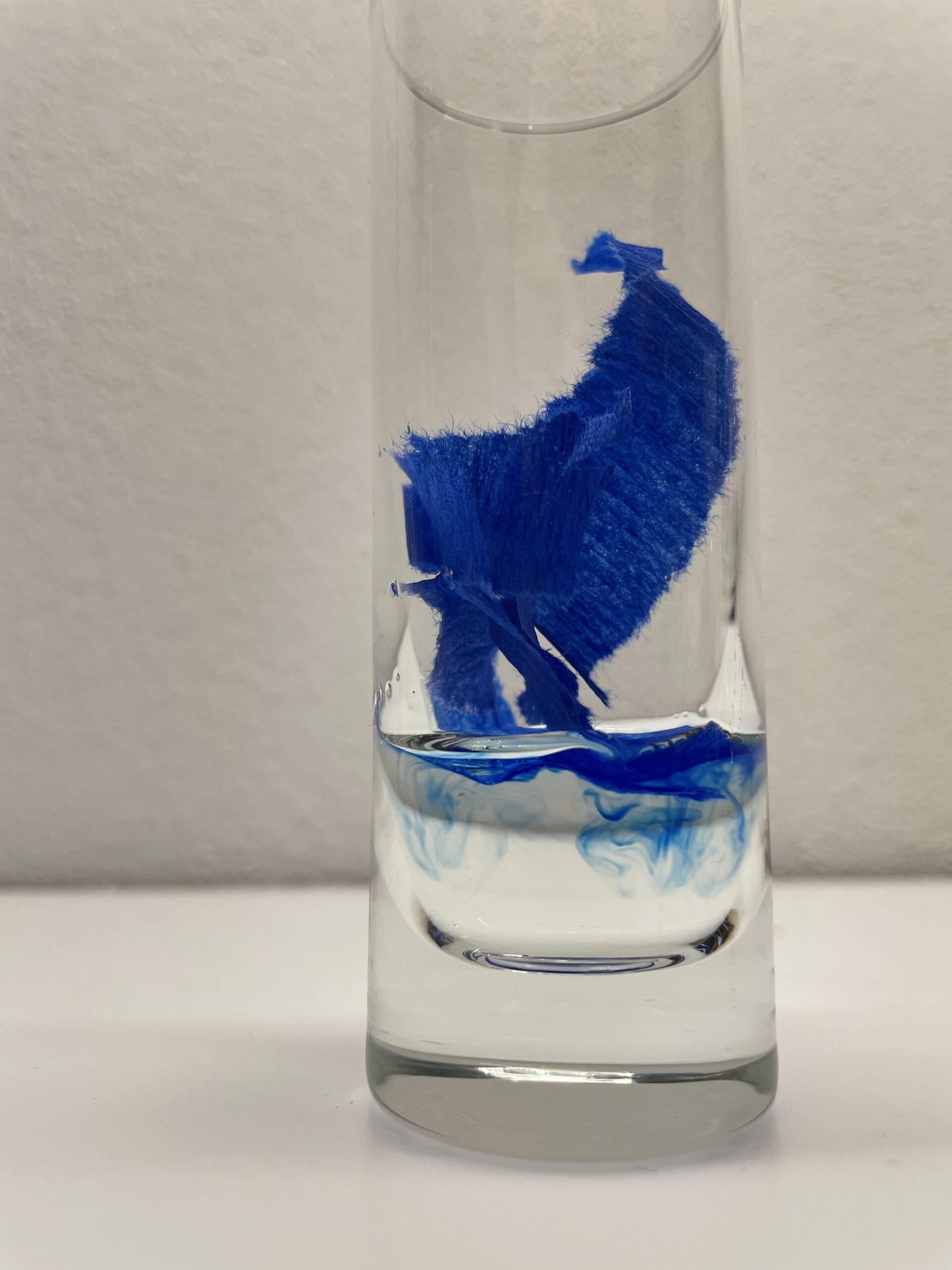
Now stir the crepe paper in the water with the wooden stick.
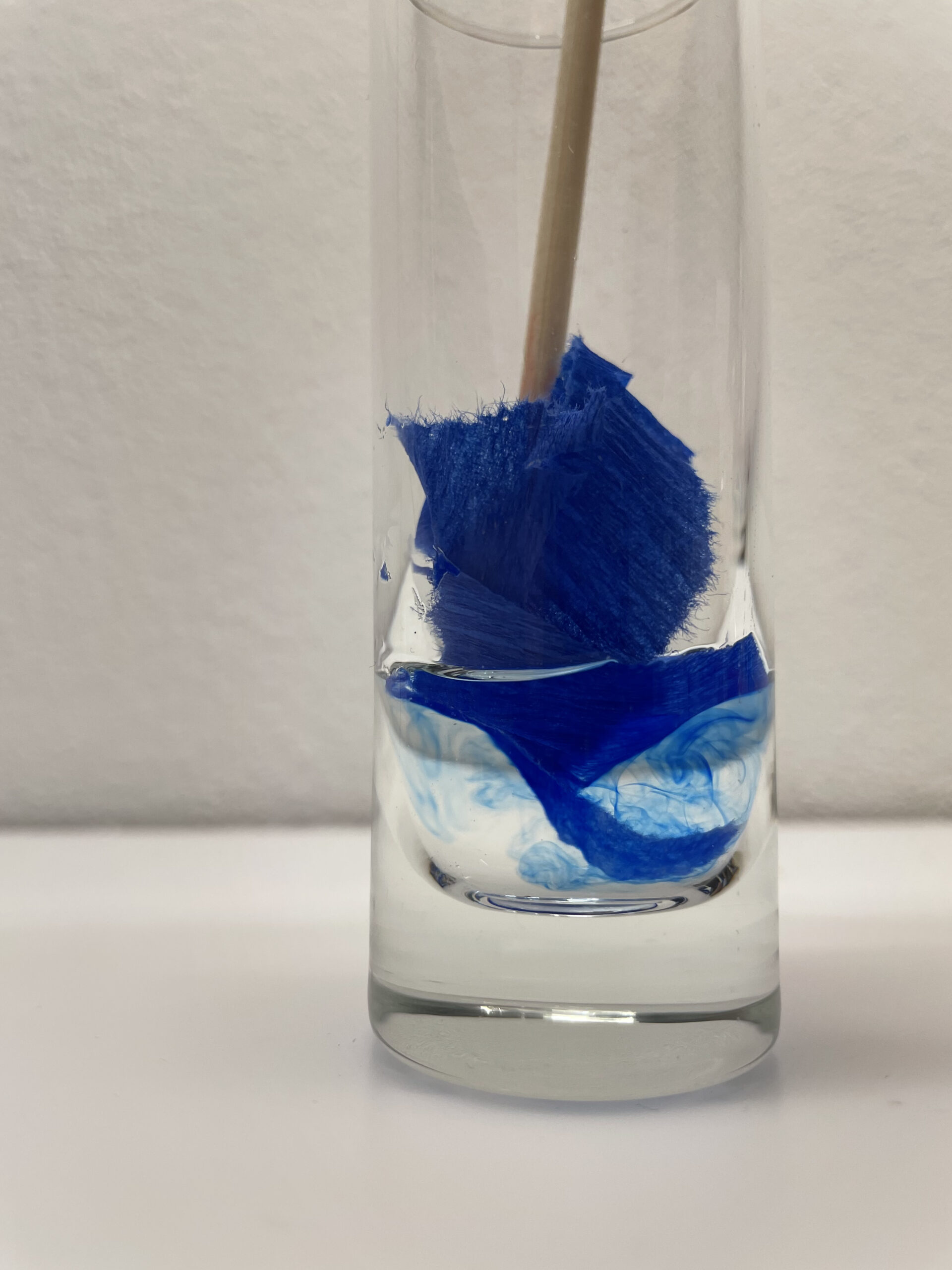
The water turns blue. If the colour of the water is intense enough for you, you fish the crepe paper with the wooden stick again out of the water.
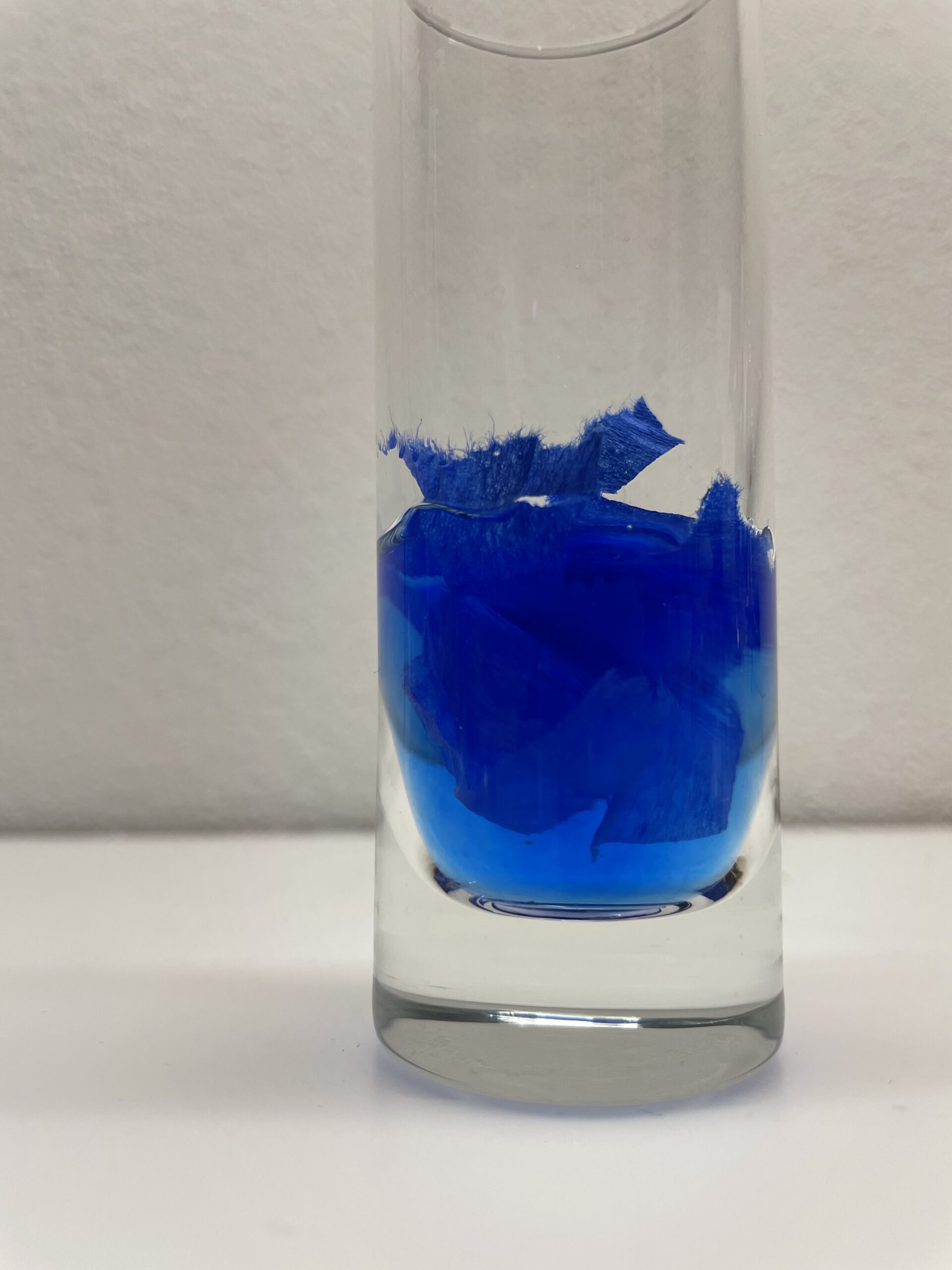


Now you're slowly pouring the oil into the glass.
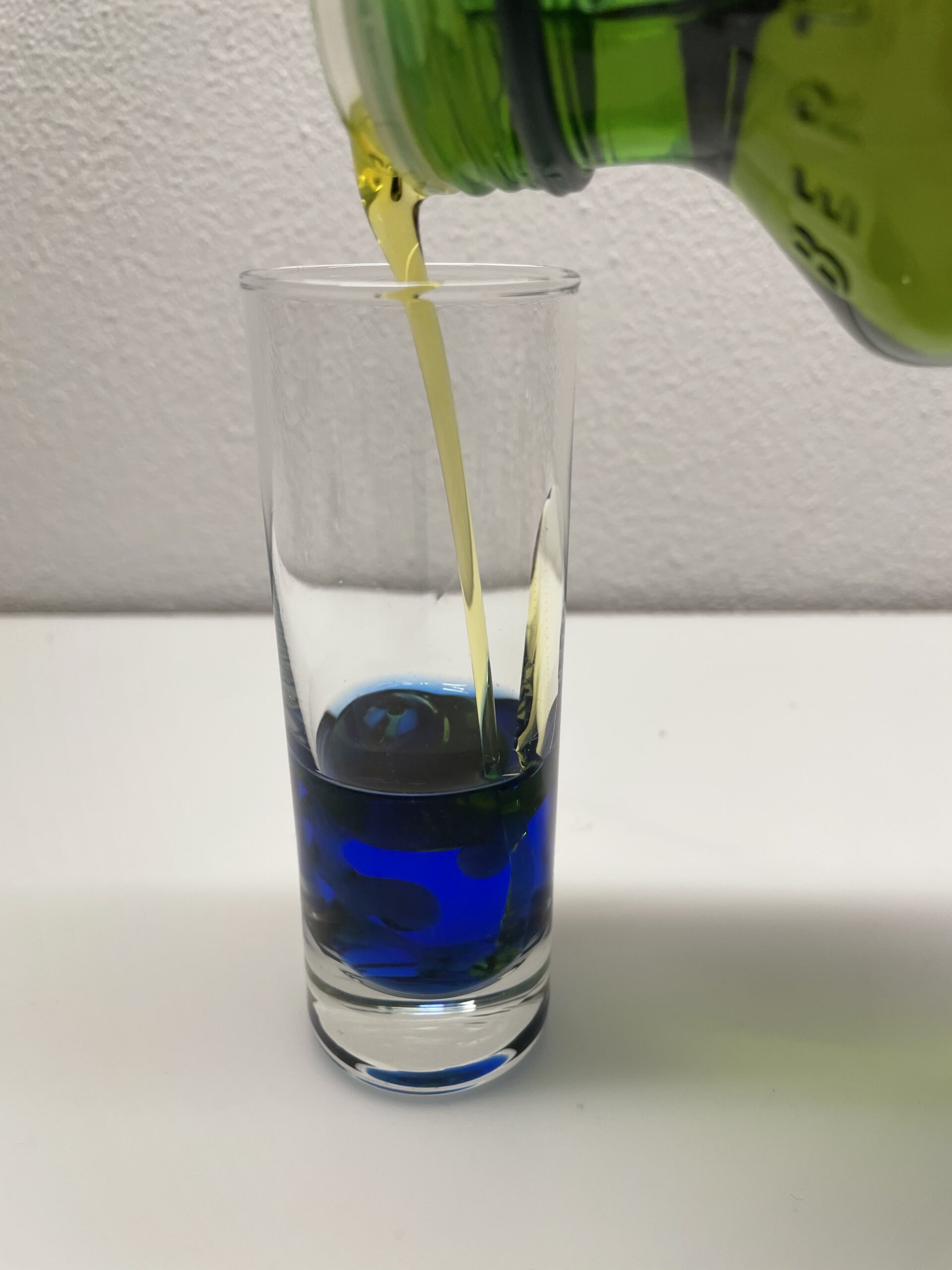
And watch what happens.

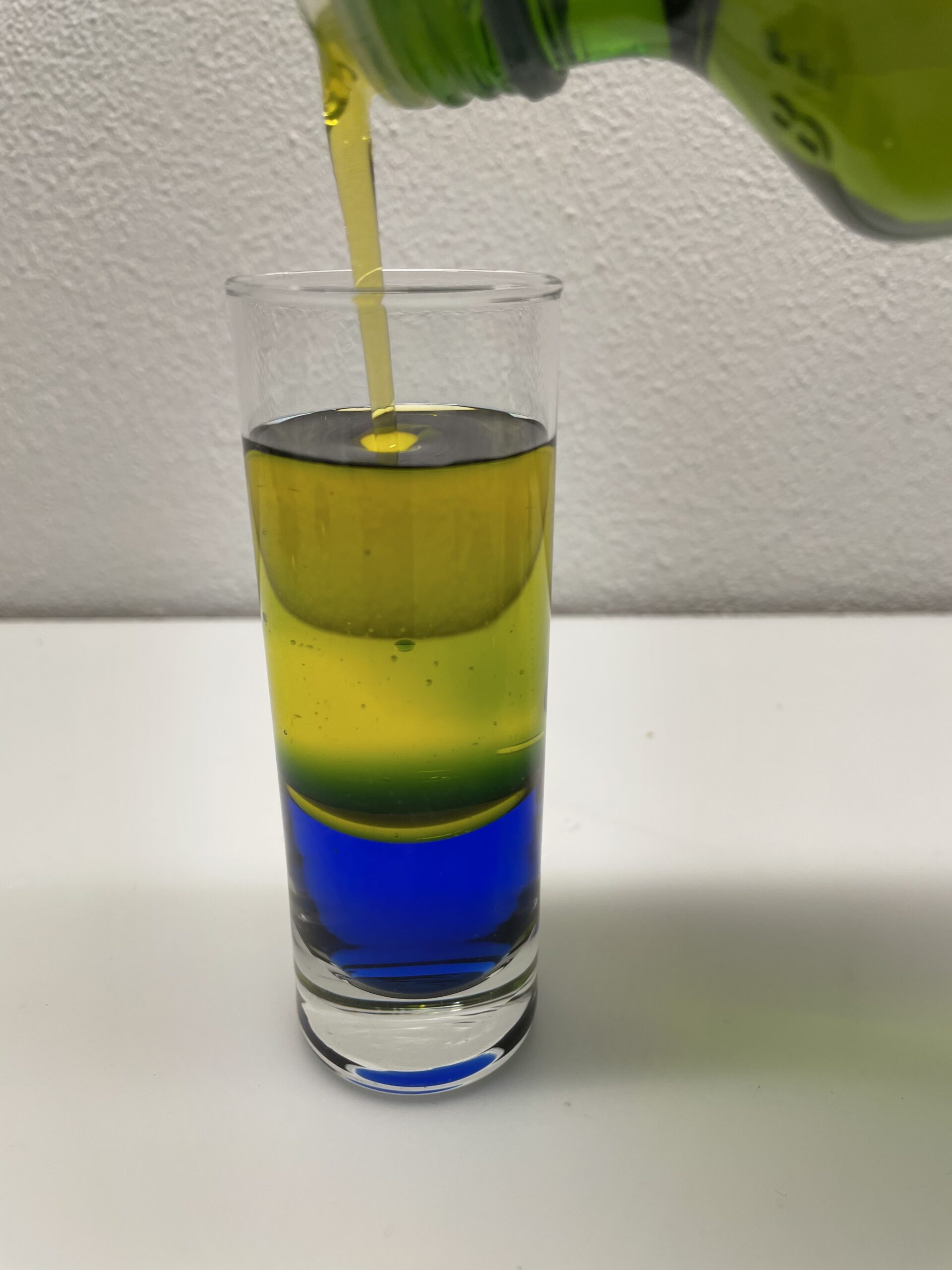
Water and oil remain separate.
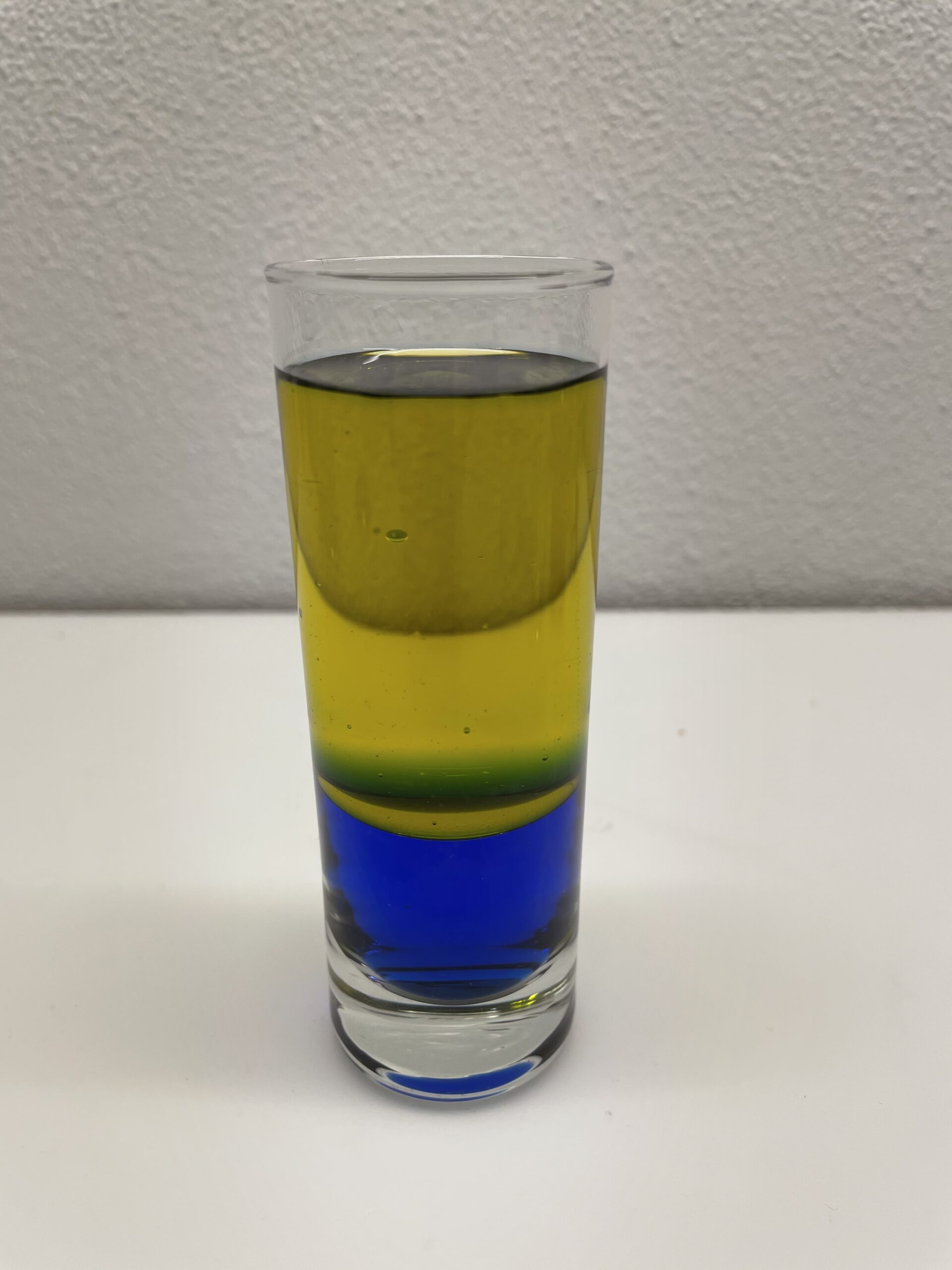
Even when mixing, the oil does not mix with the water! After a short time, this mixture is separated again!
What is this about? Water would like to stay 'under itself' when oil is nearby. Therefore, water does not mix with oil.
And why is the water below? Because water is 'tighter' than oil. Take, for example, two identical glasses and fill one glass with water and the other with oil. Then you weigh both glasses. What do you find? The glass with water is heavier than the glass with oil, and that, although in both glasses is the same amount of liquid.
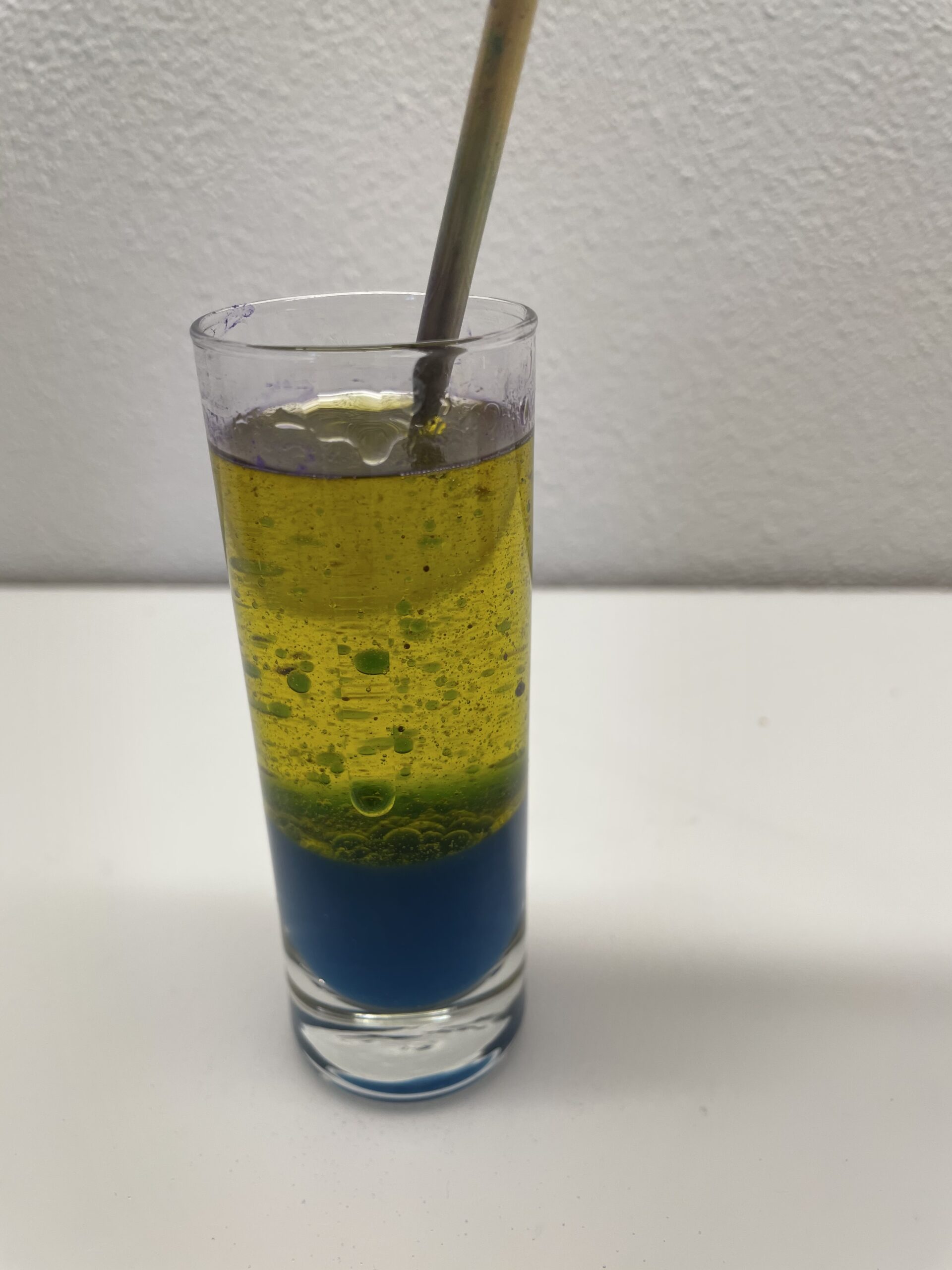
Try it out!
Children 2